Have you seen the recent media reports suggesting that an asteroid designated 2014 UR116 represents an impact threat to Earth?This is wrong!
But for fun, and to understand how dramatically the rate of our knowledge of near-Earth asteroids has increased, check out this series of maps from Armagh Observatory in northern Ireland, showing known near-Earth asteroids since the year 1800.
And if it seems as if we’re barraged with stories about near-Earth asteroids these days, just know that those routine searches by NASA and other astronomical institutions are the reason.
1800 – no known asteroids

1850 – 10 asteroids known and named
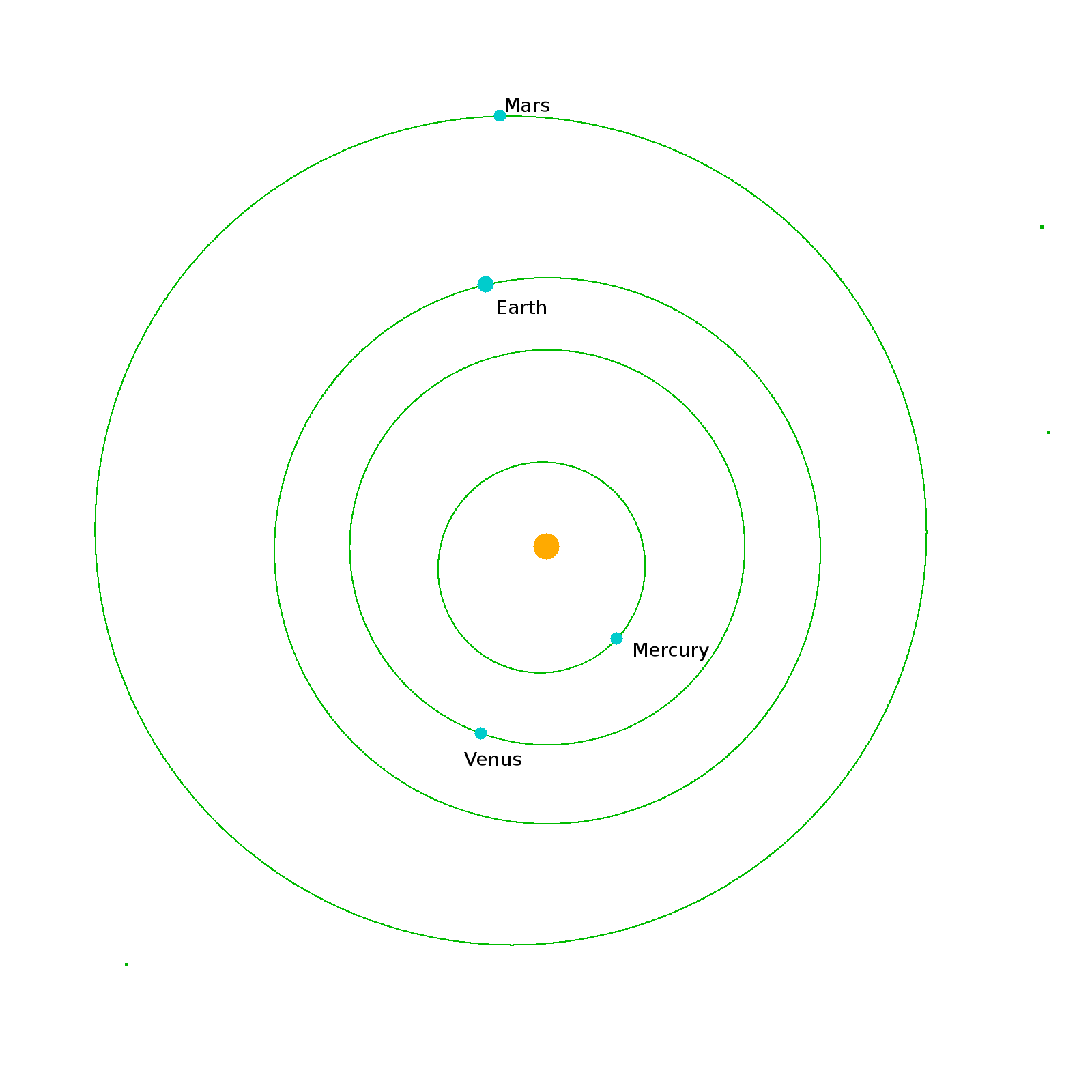
1900 – hundreds of known objects in the main belt, some even inside the orbit of Mars
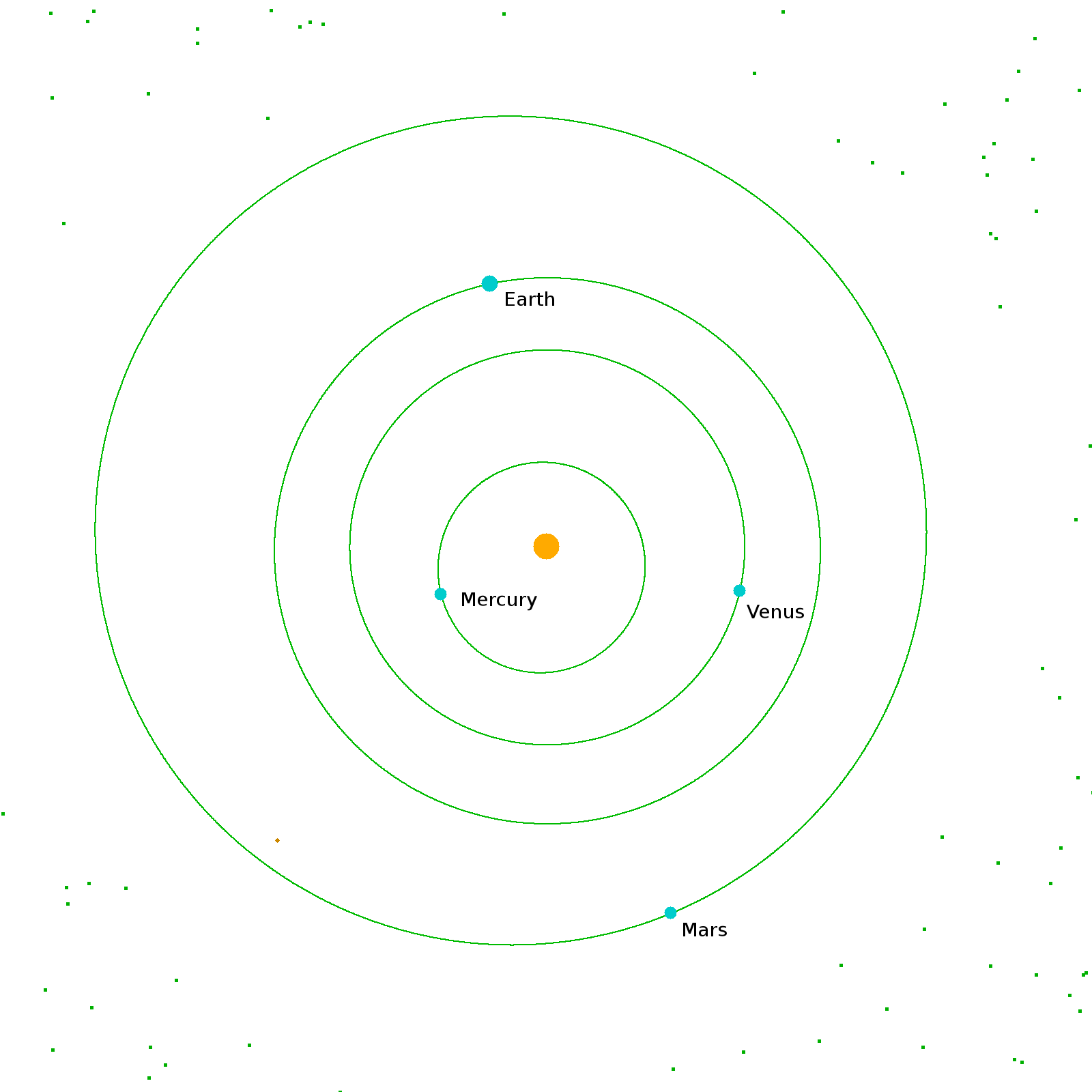
1950 – almost 2000 known objects, with a handfull of Earth crossers
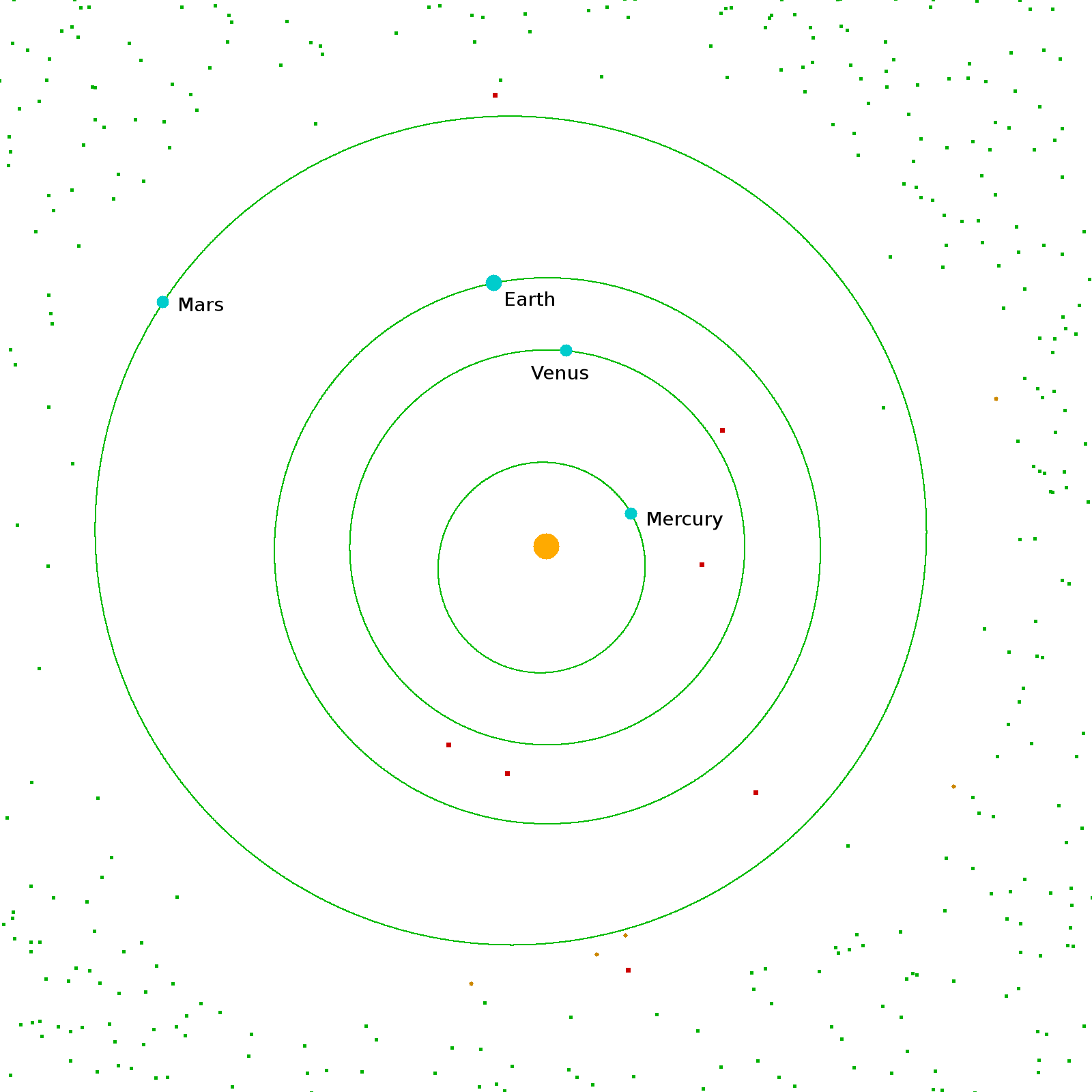
1990- over 9,000 known objects

2000 – automated searches bring the total to 86,374
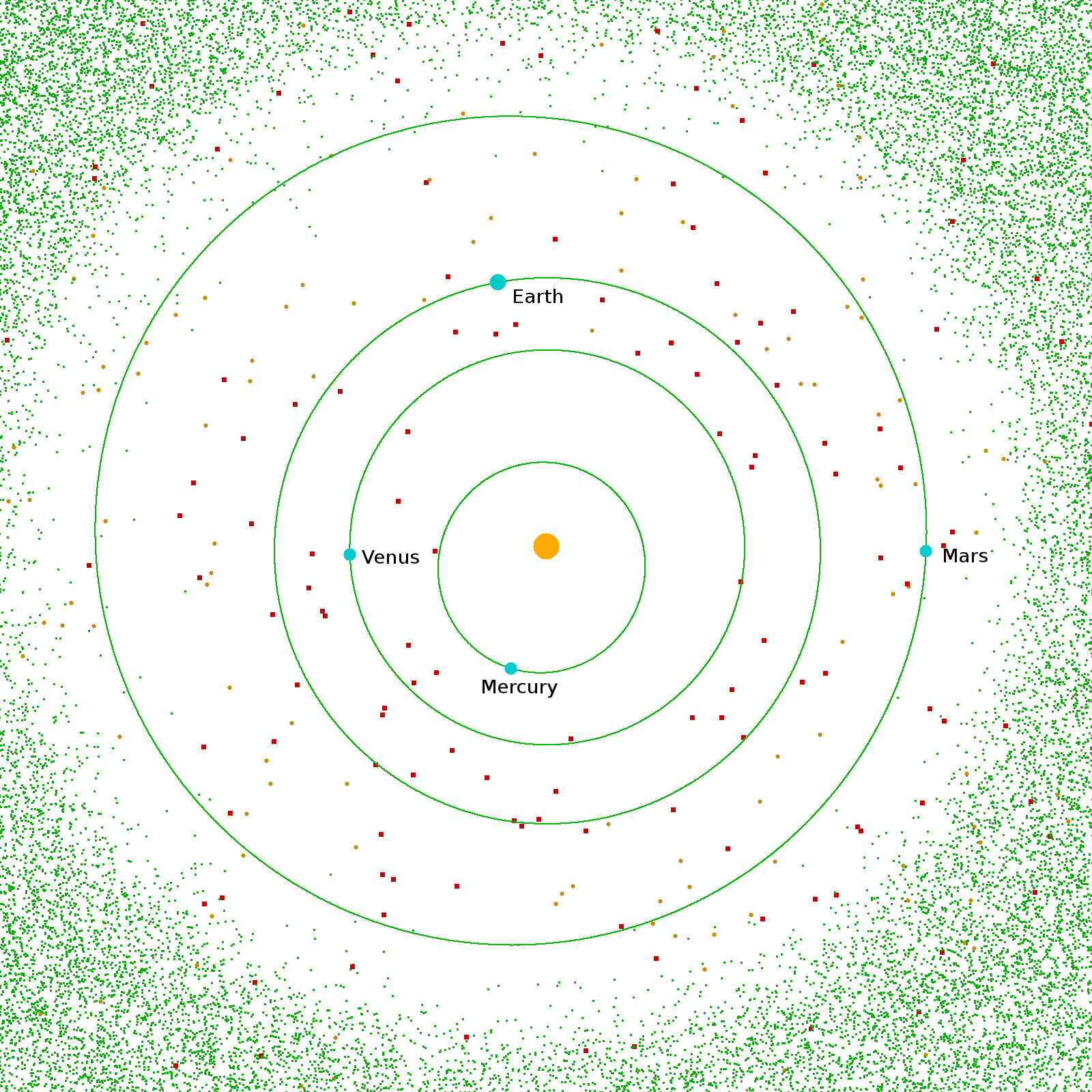
2007 August – 379,084 known objects ranging from a few metres up to the dwarf planet Ceres
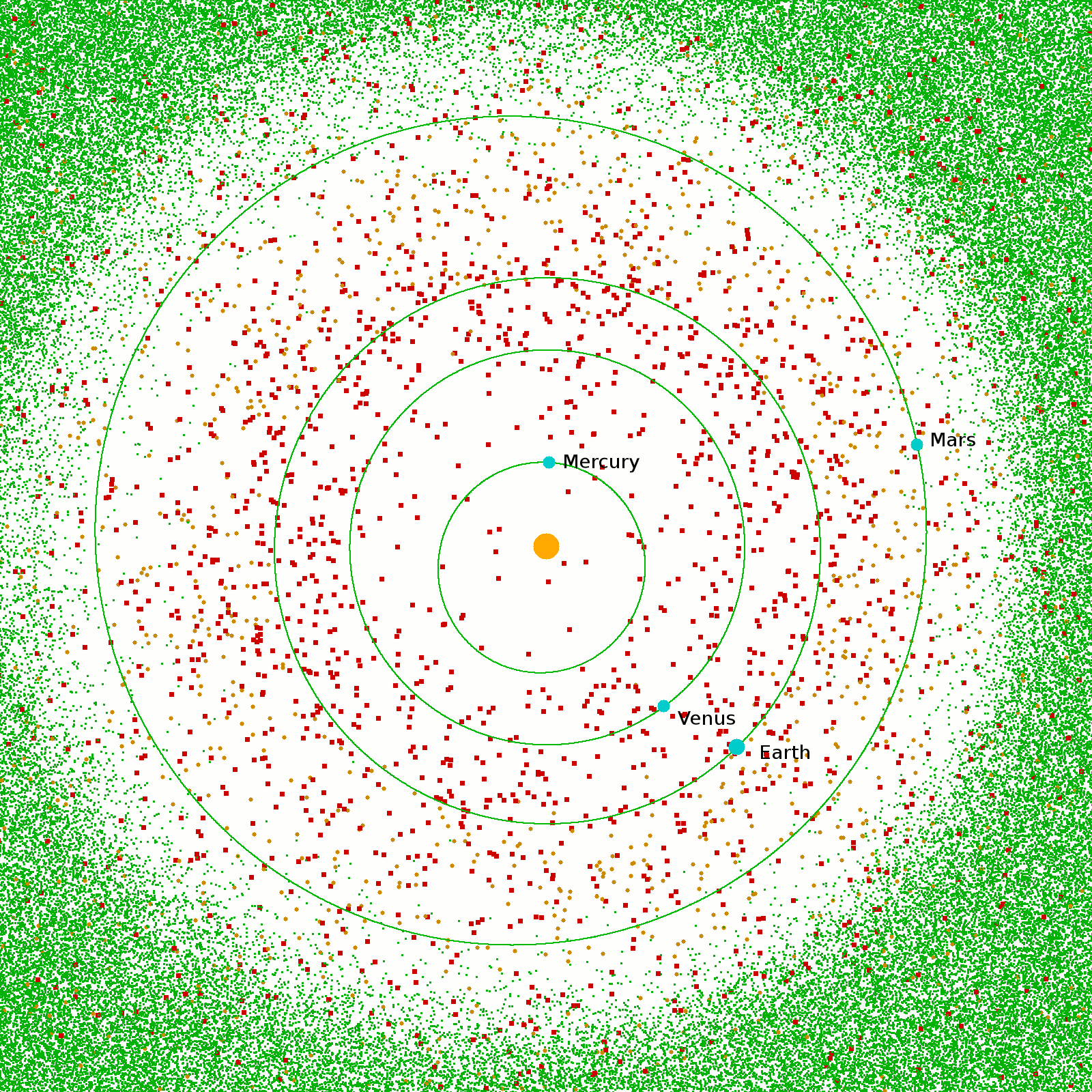
Current map of known asteroids in the inner solar system – December 10, 2014
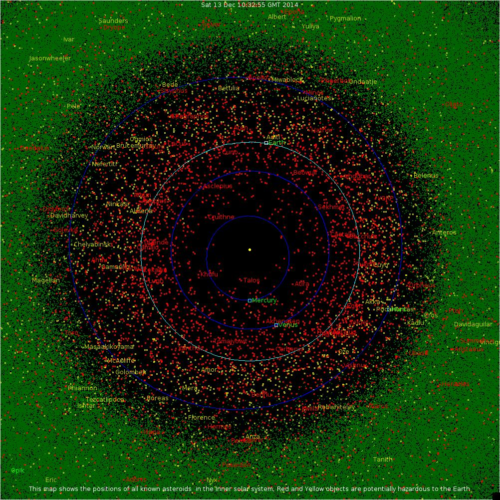
- Green dots represent objects which do not approach the Earth at present e.g. Main Belt asteroids
- Yellow dots represent objects which approach the Earth but do not cross its orbit e.g. Amor asteroids
- Red dots represent objects which cross the Earth’s orbit e.g. Aten and Apollo asteroids
Coming back to near-Earth object 2014 UR116: The closest the asteroid will get to Earth is about 2.7 million miles (4.3 million km) in April 2047. That’s more than 10 times the moon’s distance.











